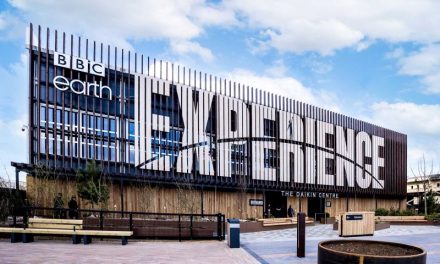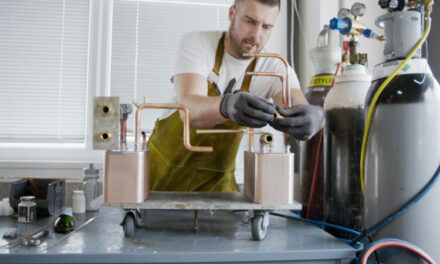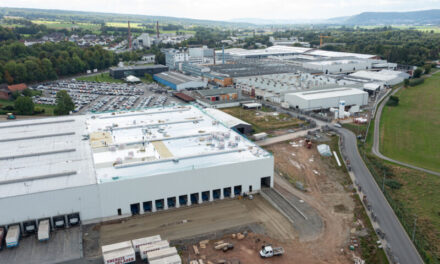 System improvements made downstream of compressors can achieve significant energy savings. John Hill, marketing services manager for Parker Hannifin’s Pneumatics Division, explains
System improvements made downstream of compressors can achieve significant energy savings. John Hill, marketing services manager for Parker Hannifin’s Pneumatics Division, explains
Regardless of whether you are running a factory, process or manufacturing operation, it is fairly certain that energy and cost savings will be an integral part of any business model. Therefore, because compressed air can be such a major consumer of energy (to such an extent that it is often referred to as the fifth utility), it is important that the efficiency of compressed air systems are reviewed on a regular basis.
However, due to poor design, lack of maintenance or the use of outdated component parts, many compressed air systems are inefficient.
Most engineers will be aware of the fact that the compressor is potentially the first item to be considered for improvement if reducing energy consumption is the goal. Indeed, most air users will by now have installed modern variable speed compressors that, if maintained correctly, are extremely efficient. It is now downstream of the compressor that we must look for further savings.
Distribution pipework can often extend to tens or hundreds of metres in length. Older steel pipework is prone to leaks, especially at weld points, and to internal corrosion that over time will affect the flow dynamics of the air stream. Maintaining consistent pressure at the points of use will therefore require an increase in output from the compressor, in turn using more energy.
Modern aluminium pipework systems, such as Transair, have been designed to overcome these issues. Not only are they lighter, and therefore easier to install and reconfigure than traditional steelwork, they will not rust, and the use of quick fit and leak-proof sealed joints ensures that the problem of energy wastage through leaks is eliminated.
 Energy efficient dryers
Energy efficient dryers
Dryers are often installed in compressed air systems to minimise problems of corrosion and microbial growth created by water vapour in the air stream. This is especially important if high quality air is required, for example, in food or pharmaceutical manufacturing. Dryers can use large amounts of energy (especially if they are incorrectly maintained). Indeed, drying costs can sometimes be as high as 80% of total operational costs.
Although there are a number of different types of dryer available, one of the most efficient uses adsorption technology. An adsorption, or desiccant dryer, consists of two desiccant filled chambers, one drying the air while the other is undergoing regeneration, with a small volume of dried air from the drying chamber being used as purge air.
Recent systems such as the PNEUDRI desiccant air dryers from Parker are now fitted with Dewpoint Dependent Switching (DDS). This effectively eliminates unnecessary desiccant regeneration cycles and ensures that energy consumed is directly proportional to the actual air flow, temperature and moisture loading – not the rated capacity of the dryer. This provides energy savings which can be in excess of 60%.
Pressure drop
A common problem in compressed air systems can be a pressure drop at or near the points of use, especially if this is at a distance from the compressor. The problem can be aggravated by factors as simple as incorrectly specified or badly maintained inline air filters.
It’s important to recognise that filters for removing oil, dirt, dust, pollen, moisture and other contaminants from the compressed air flow are not fit and forget items. Over time the solids loading will inevitably increase, causing the element to become partially or, in extreme conditions, fully blocked. This will prevent the filter from functioning, thereby allowing contaminants downstream, and will place greater demands on the compressor if system pressure is to be maintained.
Filters should be checked as part of routine maintenance schedules. This process is generally quick and simple, especially if modular devices such as FRL units are being used as these are normally designed so that modules can be easily clipped and locked into place.
It is also worth considering an upgrade of standard components as a means of further reducing pressure losses. In many instances, the savings to be realised can produce a fast return on investment. For example, the latest generation of valves, manifolds and filters use carefully designed air flow dynamics, often based on modelling techniques drawn from the aerospace sector, to combine exceptionally high levels of performance with zero or almost zero pressure drop across the component.
These systems use lightweight and corrosion resistant injection moulded construction and can be built and installed quickly, easily and cost effectively. The optimised air flow paths can also mean that modular FRL devices also offer the opportunity to reduce operating pressure, as well as improved oil atomisation, allowing lubricating oil mist to travel further along air lines even at lower pressures. This can be crucial in applications where air tools are used and correct lubrication is critical to efficient operation. Moreover, size for size, these products can be up to 45% lighter and smaller than conventional units while maintaining higher flow rates, enabling engineers to replace older devices with smaller, more cost effective units.
The need to maximise energy efficiency is a common cause today and so it makes sense to work closely with your supplier and use their expertise to make the right adjustments to your system. Energy efficiency is on everyone’s agenda and there is a lot of specialist advice available from the market leaders in pneumatics. With the right help, you can ensure that your compressed air system is designed, built and maintained efficiently, using correctly specified and sized components to optimise and reduce energy consumption.





